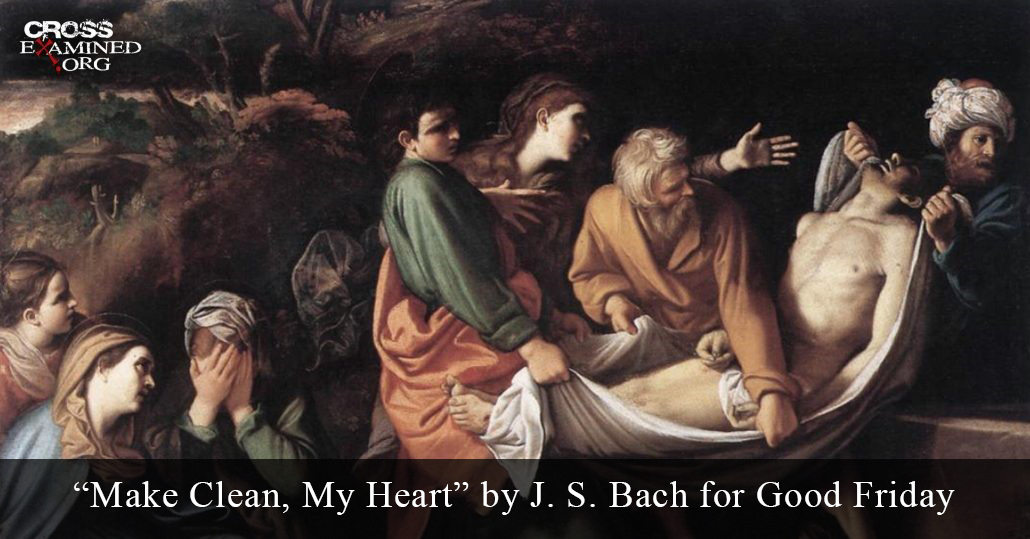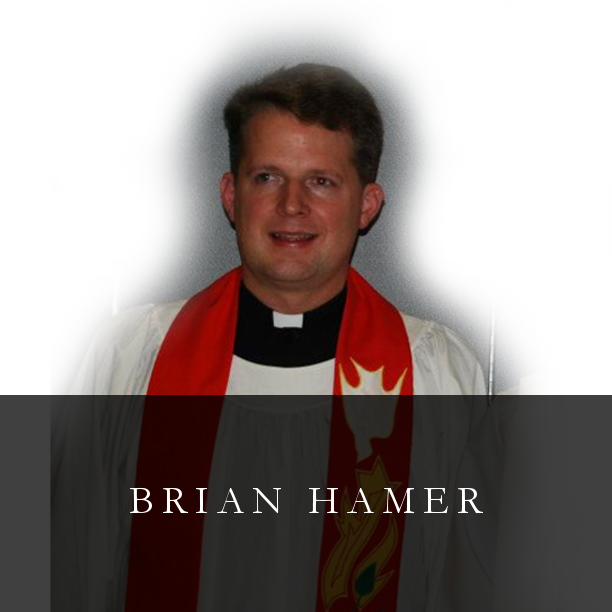| [It is] A setting of the Passion story from St. Matthew’s Gospel, BWV244, probably performed on Good Friday 1727. The St. Matthew Passion is by any standard a remarkable composition—one of the most complex of all Bach’s vocal works and for many the most profound. Mendelssohn considered it to be ‘the greatest of Christian works’, and many other superlatives have continued to be accorded this emotionally powerful music, which almost every choral group aspires to perform. (Oxford Composers Companion: J. S. Bach, p. 430). |
The aria that I have chosen for this issue of “Lifted Voice” occurs during the narrative of Jesus’ burial, where we read, “When the even was come, there came a rich man of Arimathea, named Joseph, who also himself was Jesus’ disciple: He went to Pilate, and begged the body of Jesus. Then Pilate commanded the body to be delivered” (Matt. 27:57-58). Here the church reaches a key moment in her creedal confession, “He was buried,” and a wonderful opportunity for poetic and musical elaboration. This aria, a perennial favorite for baritone soloists, applies the good news of Jesus’ burial to the believer. Building on the image of Jesus’ pending burial (the narrative of His actual burial follows the aria), the text petitions the Lord to be interred in the believer and to find His rest and sweet repose in His own dear children. What do you think is the theological significance of the lilting, 6/8 meter and the use of two oboes?
| Mache dich, mein Herze, rein, Ich will Jesum selbst begraben. Denn er soll nunmehr in mir Für und für Seine süße Ruhe haben Welt, geh aus, laß Jesum ein! | Make thee clean, my heart, from sin; I would my Lord inter. May He find rest in me ever in eternity, His sweet repose be here. World depart; let Jesus in! |
The timing of this aria in its original context is a gem unto itself. The Passion Vespers in Leipzig started at 3:00 p.m. on Good Friday. Since the St. Matthew Passion is about three hours long and this aria comes towards the end of the work, it would have been sung at about 6:00 p.m. on Good Friday—the very hour of Jesus’ burial before the Sabbath. Musically, however, there is no hurry to keep the old laws, which have been fulfilled. Rather, the believer is at rest in his heart because Jesus’ body is about to be laid to rest. As the hymn puts it, “O Ground of faith, Laid low in death, Sweet lips, now silent sleeping!” (The Lutheran Hymnal 167.5).
As for the two oboes and the 6/8 meter, this is pastoral music– shepherd’s music–depicting Christ as the Good Shepherd, who laid down His life for His sheep and now leads them with the rod and staff of the Law and the Gospel. As you meditated on the text of this aria, did you think of Holy Baptism and what it means for daily living? You were made clean in Holy Baptism, robed with the righteousness of Christ Himself. Now what? Live baptismally, that is, in daily repentance and faith. Martin Luther summarizes your baptismal pattern of daily living in the Small Catechism:
| What does such baptizing with water indicate? It indicates that the Old Adam in us should be daily contrition and repentance be drowned and die with all sins and evil desires, and that a new man should daily emerge and arise to live before God in righteousness and purity forever. |
Taken together, Luther’s theology and Bach’s musical sermons stand together to preach one thing—the wisdom of the cross—but with one nuanced difference:
| We do not hear the sermons of Luther. We read them as we read the sermons of other great preachers who have long since joined the Church Triumphant. We do, however, hear Bach’s sermons. The words of other great musicians speak to us, but the works of Bach preach to us. (As quoted in Robin Leaver, J. S. Bach as Preacher, p. 25) |
Extra Choral Credit: Hearing Bach’s St. Matthew Passion in its Entirety
That said, live performances of this nearly three-hour work only come along every now and then, so I invite you to set aside some time to listen to the entire Passion (perhaps in small doses?), following the English translation as you listen. Here is the link to a superb performance of the entire Passion by the Netherlands Bach Society, from which the previous link was extracted:



 RSS Feed
RSS Feed
